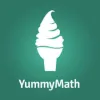Take a look inside 5 images
YummyMath
Pros: Examples and prompts show how math matters and can be used right now.
Cons: Teachers will need to create additional support resources particularly for struggling learners.
Bottom Line: Yummy Math brings us 3rd-12th grade Common Core-aligned math activities on topics kids care about.
Teachers can use Yummy Math to supplement their existing math curriculum. This a great place to go when students say, “When will I ever use this?” Activities can be as a single lesson filled with rich discussion or a quick class opener. If your state has adopted Common Core, Yummy Math is filled with examples, where students can both create and interpret mathematical models from real data. A one-year subscription may be worth it at least once so you can easily download the editable worksheets and adapt them to your classroom setting. For example, if you're taking a class trip to Washington D.C., you could modify the activity “Data Observation Tasks of the National Mall Sites,” so kids can collect and analyze some of their own data.
Yummy Math hosts over 350 real world math activities. All are free to download in PDF form. For a yearly fee of $22.00, a person purchases a single membership which provides editable versions of the activities and answer keys. Teachers can look for tasks by genre such as holidays, sports, movies, food, science, art, or social studies. Resources are also organized by grade and range between 3rd grade and high school.
Each activity begins with a realistic problem. This might include analyzing seismic data from a recent earthquake, or figuring out how to win your Fantasy Football league this year. Tasks are tagged with standards from multiple grade levels because they can be adapted and made more or less difficult. Students begin by reading a passage and then use math to analyze data and solve problems.
Yummy Math picks truly relevant examples of how we use math every day to make decisions. For example, should you use cloth diapers or disposable diapers? Each activity is already set up to be used in the classroom and aligned to Common Core standards. While the Yummy Math topics are extremely engaging, for the most part, they are worksheets. A few tasks may have introductory videos like “Fantasy Football 101: A Super Beginner's Guide,” which gives kids the basics so even football newbies can fully participate in the math activity. Some video clips like the one in the “DVR Dilemma” are missing excitement. The casual tone makes it seem like the narrator is bored.
A similar site, Get the Math, is more intentional about how it hooks kids with polished videos and online simulations. However, Yummy Math has a lot more activities than Get the Math. And it's a huge step up from the types of story problems featured in most textbooks.











